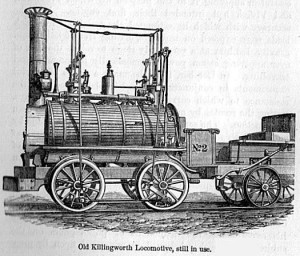Perhaps the most important component of a successful IoT transformation is building it on a robust platform, because that alone can let your company go beyond random IoT experiments to achieve an integrated IoT strategy that can add new components systematically and create synergistic benefits by combining the various aspects of the program.
A good starting point for discussion of such platforms is a description of the eight key platform components as detailed by IoT Analytics:
- “Connectivity & normalization: brings different protocols and different data formats into one ‘software’ interface ensuring accurate data streaming and interaction with all devices.
- Device management: ensures the connected ‘things’ are working properly, seamlessly running patches and updates for software and applications running on the device or edge gateways.
- Database: scalable storage of device data brings the requirements for hybrid cloud-based databases to a new level in terms of data volume, variety, velocity and veracity.
- Processing & action management: brings data to life with rule-based event-action-triggers enabling execution of ‘smart’ actions based on specific sensor data.
- Analytics: performs a range of complex analysis from basic data clustering and deep machine learning to predictive analytics extracting the most value out of the IoT data-stream.
- Visualization: enables humans to see patterns and observe trends from visualization dashboards where data is vividly portrayed through line-, stacked-, or pie charts, 2D- or even 3D-models.
- Additional tools: allow IoT developers prototype, test and market the IoT use case creating platform ecosystem apps for visualizing, managing and controlling connected devices.
- External interfaces: integrate with 3rd-party systems and the rest of the wider IT-ecosystem via built-in application programming interfaces (API), software development kits (SDK), and gateways.”
Despite (or because of, the complexity,) I think this is a decent description, because a robust IoT platf0rm really must encompass so many functions. The eight points give a basis for deciding whether what a company hawks as an IoT platform really deserves that title or really constitutes only part of the necessary whole (Aside: it’s also a great illustration of my Essential Truth that, instead of hoarding data as in the past, we must begin to ask “who else can use this data?” either inside the company or, potentially, outside, then use technology such as an IoT platform to integrate all those data uses productively.).
During my recent Barcelona trip (disclaimer: Siemens paid my way and arranged special access to some of its key decision makers, but made no attempt to limit my editorial judgment) I interviewed the company’s Chief Strategy Officer, Dr. Horst J. Kayser, who made it clear (as I mentioned in my earlier post about Siemens) that one of the advantages the company has over pure-play software firms is that it can apply its software offerings internally first and tweak them there, because of its 169-year heritage as a manufacturer, and “sits on a vast program of automation.”
Siemens’s IoT platform, MindSphere is a collaboration with SAP, using the latter’s vast HANA cloud. It ties together all components of Siemens’s IoT offerings, including data analytics, connectivity capabilities, developers’ tools, applications and services. MindSphere focuses on monitoring manufacturing assets’ real-time status, to evaluate and use customers’ data, producing insights that can cut production costs, improve performance, and even switch to predictive maintenance. Its Mind Connect Nano collects data from the assets and transferring it to MindSphere.
The “digital twin” is integrated throughout the MindSphere platform. Kayser says that “there’s a digital twin of the entire process, from conception through the manufacturing and maintenance, and it feeds the data back into the model.” In fact, one dramatic example of the concept in action is the new Maserati Ghibli, created in 16 months instead of 30 — almost 50% less time than for prior models. Using the Teamcenter PLM software, the team was able to virtually develop and extensively test the car before anything was created physically.
IMHO, Mindsphere and components such as Teamware might really be the key to actualizing my dream of the circular company, in this case with the IoT-based real-time digital twin at the heart of the enterprise — as Kayser said, “everything is done through one consistent data set.)” I hope to explore my concept, and the benefits I think it can produce, more with the Siemens strategists in the future! I tried the idea out on several of them in Barcelona, and no one laughed, so we’ll see…
As with the company’s rail digitization services that I mentioned in my earlier post, there’s an in-house guinea pig for MindSphere as well: the company’s “Factory of the Future” in Amberg. The plant manufactures Simatic controllers, the key to the company’s automation products and services, to which digitalization is now being added as part of the company’s Industrie 4.0 IoT plan for manufacturing (paralleling GE’s “Industrial Internet.”). As you may be aware, Siemens’s efforts in this area are a subset of a formal German government/industry initiative — I doubt seriously we’ll see this in the U.S. under Trump.
The results of digitalization at Amberg are astonishing by any measure, especially the ultimate accomplishment: a 99.9988 percent rate (no typo!!), which is even more incredible when you realize this is not mass production with long, uniform production runs: the plant manufactures more than 1,000 varieties of the controllers, with a total volume of 12 million Simatic products each year, or about one per second. Here are some of the other benefits of what they call an emphasis on optimizing the entire value chain:
- shorter delivery time: 24 hours from order.
- time to market reduced by up to 50%.
- cost savings of up to 25%
Of course there are several other robust IoT platforms, including GE’s Predix and PTC’s Thingworx, but my analysis shows that Mindsphere meets IoT Analytics’ criteria, and, combined with the company’s long background in manufacturing and automation, should make it a real player in the industrial internet. Bravo!

